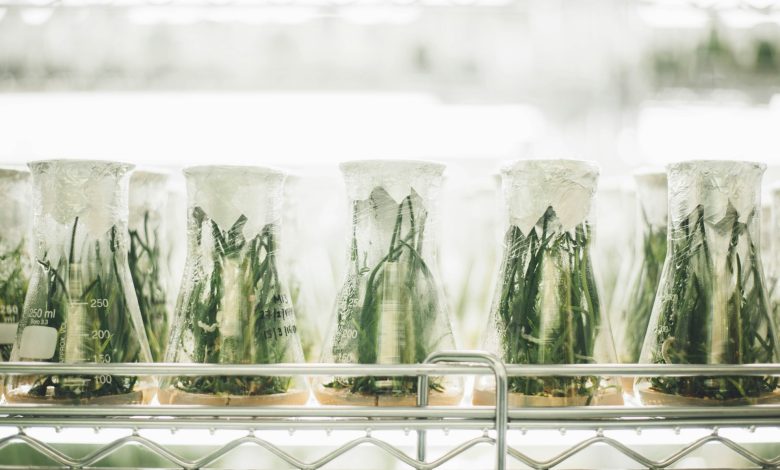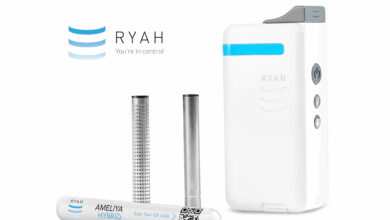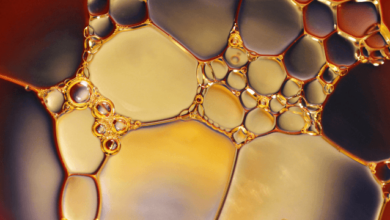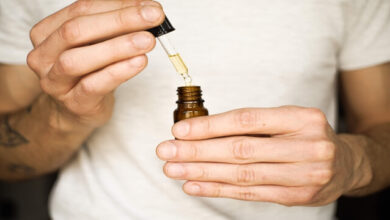
Table of Contents
I. Introduction to CBD Extraction Methods
A. Understanding CBD Extraction
Cannabidiol (CBD) extraction is the process of obtaining CBD-rich oils from cannabis or hemp plants. This extraction is crucial as it isolates the desired compound from the plant material, ensuring purity and potency. CBD has gained immense popularity due to its potential health benefits, ranging from pain relief to anxiety reduction.
B. The Science Behind CBD
CBD is one of over a hundred cannabinoids found in cannabis plants. Its molecular structure allows it to interact with the body's endocannabinoid system, influencing various physiological processes. Research suggests that CBD possesses anti-inflammatory, analgesic, and neuroprotective properties, making it a promising therapeutic agent.
C. Legal Landscape of CBD Extraction
The legal status of CBD extraction varies depending on geographical location and jurisdiction. While hemp-derived CBD is federally legal in many countries, regulations regarding cultivation, extraction, and distribution may differ. Manufacturers must navigate these legal complexities to ensure compliance and avoid legal repercussions.
D. Importance of Choosing the Right Extraction Method
Selecting the appropriate extraction method is paramount to the quality and efficacy of CBD products. Different techniques yield varying concentrations of cannabinoids and terpenes, affecting the overall composition and potency of the final product. Additionally, environmentally friendly extraction methods align with sustainable practices, minimizing ecological impact.
II. Common CBD Extraction Techniques
A. Solvent-Based Extraction Methods
Solvent-based extraction involves the use of solvents such as ethanol, hydrocarbons, or CO2 to dissolve CBD and other compounds from plant material. While effective, solvent-based methods require careful handling to ensure the removal of residual solvents from the final product.
B. Supercritical CO2 Extraction
Supercritical CO2 extraction utilizes carbon dioxide in a supercritical state to extract cannabinoids from plant material. This method offers high selectivity, allowing for the isolation of specific compounds while minimizing damage to delicate terpenes and flavonoids.
C. Hydrocarbon Extraction
Hydrocarbon extraction involves the use of hydrocarbon solvents like butane or propane to extract cannabinoids and terpenes from cannabis or hemp plants. While efficient, this method carries inherent safety risks due to the flammable nature of hydrocarbons.
D. Ethanol Extraction
Ethanol extraction utilizes ethanol as a solvent to extract cannabinoids and other compounds from plant material. This method is cost-effective and efficient, but careful control of temperature and extraction duration is necessary to prevent the degradation of sensitive compounds.
III. Advanced CBD Extraction Technologies
A. Ultrasonic Extraction
Ultrasonic extraction employs high-frequency sound waves to disrupt plant cell walls, facilitating the release of cannabinoids and other phytochemicals. This non-thermal extraction method reduces processing time and preserves the integrity of heat-sensitive compounds.
B. Microwave-Assisted Extraction (MAE)
Microwave-assisted extraction utilizes microwave energy to accelerate the extraction process, reducing extraction times and energy consumption. While promising, this method requires optimization to ensure uniform heating and prevent degradation of target compounds.
C. Supercritical Fluid Extraction (SFE)
Supercritical fluid extraction utilizes supercritical fluids such as CO2 to extract cannabinoids from plant material. This method offers high selectivity and efficiency while minimizing solvent residue in the final product.
D. Chromatography-Based Extraction
Chromatography-based extraction separates cannabinoids and other compounds based on their molecular properties. High-performance liquid chromatography (HPLC) and flash chromatography are commonly used techniques for isolating CBD with high purity and precision.
IV. Factors Influencing CBD Extraction Method Selection
A. Quality and Purity Requirements
The desired quality and purity of the final product dictate the choice of extraction method. High-quality CBD products require meticulous attention to extraction parameters and thorough purification to remove impurities and contaminants.
B. Scalability and Production Efficiency
Scalability is essential for commercial CBD production, as extraction methods must accommodate varying batch sizes while maintaining consistent quality and yield. Efficient extraction processes minimize production costs and maximize profitability.
C. Environmental Impact
Environmental considerations play a significant role in extraction method selection, with an increasing emphasis on sustainability and eco-friendliness. Green extraction methods reduce energy consumption, waste generation, and environmental footprint.
D. Safety and Regulatory Compliance
Ensuring consumer safety and regulatory compliance is paramount in the CBD industry. Extraction methods must adhere to stringent safety standards to mitigate health risks and legal liabilities associated with solvent residues and contaminants.
V. Case Studies: Real-Life Examples of CBD Extraction Methods
A. Case Study 1: CO2 Extraction in Hemp Industry
CO2 extraction has become the preferred method for extracting CBD from hemp due to its safety, efficiency, and versatility. Hemp producers have reported higher yields and superior product quality compared to solvent-based methods.
B. Case Study 2: Ethanol Extraction for Full-Spectrum CBD Oil
Ethanol extraction is commonly used to produce full-spectrum CBD oil, which contains a wide range of cannabinoids and terpenes. This method offers cost-effective scalability and is favored by consumers seeking the entourage effect.
C. Case Study 3: Hydrocarbon Extraction in Cannabis Concentrates
Hydrocarbon extraction is popular in the production of cannabis concentrates such as shatter and wax. Despite safety concerns, manufacturers implement strict safety protocols to ensure product quality and compliance with regulations.
D. Case Study 4: Chromatography-Based CBD Isolation
Chromatography-based methods enable the isolation of pure CBD for pharmaceutical applications. This approach ensures precise control over cannabinoid ratios and facilitates the development of standardized dosage forms for medical use.
VI. Best Practices for CBD Extraction
A. Laboratory Standards and Quality Assurance
Adhering to rigorous laboratory standards and implementing robust quality assurance protocols are essential for ensuring product safety and efficacy. Accredited testing facilities play a crucial role in verifying product quality and compliance with regulatory requirements.
B. Equipment Selection and Maintenance
Choosing the right extraction equipment and maintaining it in optimal condition is critical for achieving consistent results and maximizing productivity. Regular maintenance, calibration, and upgrades improve operational efficiency and extend equipment lifespan.
C. Process Optimization and Efficiency
Continuous process optimization enhances extraction efficiency, yield, and product quality. Implementing lean manufacturing principles and utilizing advanced technologies streamline production workflows and reduce resource consumption.
D. Collaboration and Knowledge Sharing
Collaboration and knowledge sharing within the industry foster innovation and drive continuous improvement. Networking opportunities, research partnerships, and information exchange forums facilitate the dissemination of best practices and emerging technologies.
VII. Future Trends and Innovations in CBD Extraction
A. Technological Advancements
Ongoing technological advancements, including AI integration and predictive analytics, are poised to revolutionize CBD extraction processes. Automated systems and data-driven insights optimize extraction parameters and enhance product consistency.
B. Sustainability and Green Extraction
The shift towards sustainable and eco-friendly extraction methods reflects growing consumer demand for environmentally conscious products. Renewable energy sources, waste reduction initiatives, and closed-loop extraction systems contribute to a greener CBD industry.
C. Genetic Engineering and Strain Development
Advancements in genetic engineering and strain development enable the creation of CBD-rich cultivars with enhanced potency and therapeutic efficacy. Ethical considerations surrounding genetic modification and public acceptance remain key considerations.
D. Regulatory Developments and Standardization
Regulatory developments and industry standardization efforts are crucial for establishing a cohesive framework for CBD production and distribution. Global collaboration and harmonization of standards promote consumer safety and facilitate market access.
FAQs
Q1: What is the best extraction method for producing high-quality CBD oil?
The best extraction method depends on various factors such as desired product characteristics, scalability, and regulatory compliance. CO2 extraction is widely regarded as one of the best methods due to its safety, efficiency, and ability to produce high-quality CBD oil.
Q2: Are there any safety concerns associated with CBD extraction?
Yes, safety concerns primarily revolve around solvent-based extraction methods such as hydrocarbon extraction, which involve flammable solvents. Proper equipment, training, and safety protocols are essential to mitigate risks and ensure worker safety.
Q3: How do extraction methods impact the bioavailability of CBD products?
Extraction methods can influence the bioavailability of CBD products by affecting the concentration and formulation of cannabinoids and terpenes. Methods that preserve the integrity of these compounds tend to result in higher bioavailability.
Q4: What role does terpene preservation play in CBD extraction?
Terpenes contribute to the entourage effect, enhancing the therapeutic effects of CBD by interacting synergistically with cannabinoids. Extraction methods that prioritize terpene preservation help maintain the full spectrum of beneficial compounds in CBD products.
Q5: How can companies ensure compliance with regulatory requirements in CBD extraction?
Companies can ensure compliance with regulatory requirements by staying abreast of evolving regulations, implementing robust quality control measures, and conducting thorough testing to verify product safety and potency.




